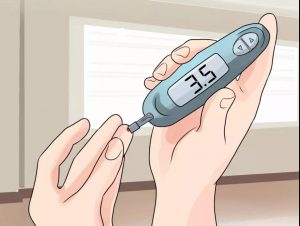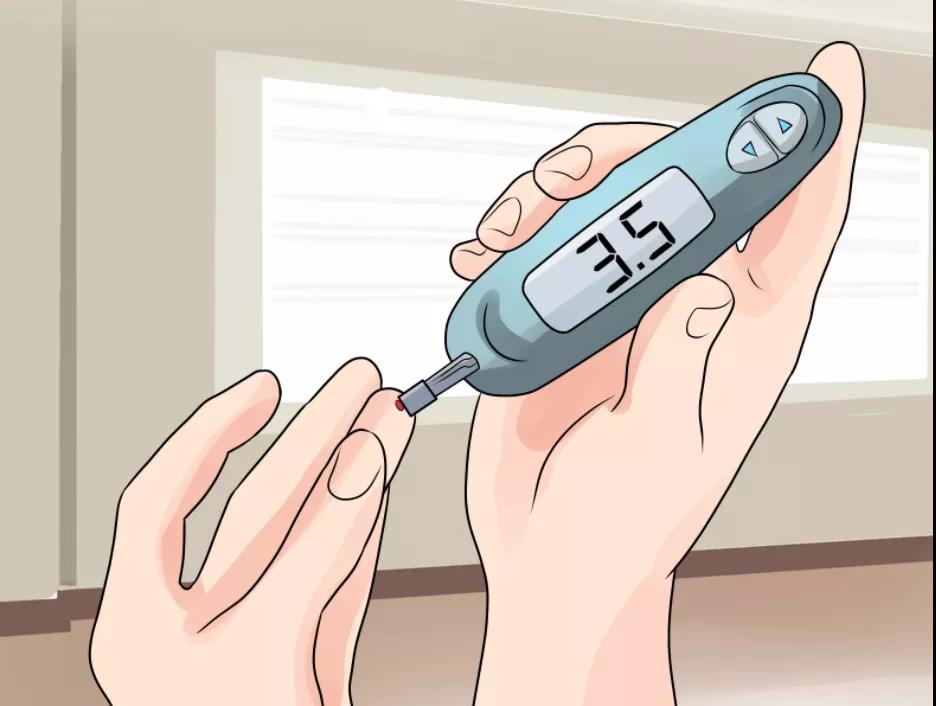
If the harm of hyperglycemia is calculated in years, the harm of hypoglycemia is calculated in minutes or even seconds.
On the way to work, after taking a bath or going to the toilet, hypoglycemia always comes surprisingly: pale face, sweating all over the body, and even fainting with black eyes
During the year, the hot summer is more prone to hypoglycemia. This is because summer days are longer, people sleep less, and do more activities, the body’s calorie consumption increases, and blood sugar consumption also increases.
Everyone often attaches great importance to hyperglycemia. In fact, the harm of hypoglycemia is not inferior to that of high blood sugar, and it is even more dangerous. Hypoglycemia can affect the brain and heart, and in severe cases, it can cause brain dysfunction, and it can also be the driving force of angina and acute myocardial infarction.
Hypoglycemia is more dangerous than hyperglycemia
In medicine, the definition of hypoglycemia is: the blood glucose of healthy people is less than 2.8 mmol / liter, and the blood glucose of diabetic patients is less than 3.9 mmol / liter.
Different degrees of hypoglycemia, the performance is different; People of different ages have different symptoms of hypoglycemia.
Mild hypoglycemia: often appearing hunger, panic, shaking, cold sweat, pale face, limbs weakness, mouth around the numb sensation and other discomfort.
Severe hypoglycemia: fuzzy consciousness, limb paralysis, coma, incontinence, etc.
For the elderly: often without any symptoms, some of the elderly show neuropsychiatric symptoms, such as abnormal speech behavior, hemiplegia, disturbance of consciousness, drowsiness, coma, etc., which are easy to be misdiagnosed as acute stroke or epileptic seizure, and need special attention.
For the infants and young children: often do not drink milk, easy to cry, pale, cold sweat, inattention, nightmares, enuresis, etc.

When acute hypoglycemia occurs, cardiac load will increase, accompanied by changes in hemorheology, it will also lead to increased platelet activation, enhanced coagulation function, and promote thrombosis.
For the elderly, the harm of hypoglycemia is far more than that of hyperglycemia. It can cause a large fluctuation of blood glucose, damage the central nervous system, promote arrhythmia, myocardial infarction and stroke, and can be fatal in severe cases.
If hypoglycemia is severe and lasts for a long time, it may also cause brain edema, cause irreversible damage to the central nervous system (such as aphasia, intellectual impairment and other sequelae), and even lead to death.
What should be eaten first when hypoglycemia?
When hypoglycemia occurs, if there is already confusion, do not feed food or water without authorization to avoid suffocation, and send it to the doctor immediately.
If hypoglycemia symptoms occur, but there are no serious cases such as convulsions and coma, many people may choose to eat biscuits, steamed bread and so on to alleviate them. This can not be said to be incorrect, but not the best choice.
In response to hypoglycemia, we suggest that you remember three “15” principles:
The 1st “15”
Once mild hypoglycemia occurs, take 15 grams of carbohydrate immediately.
Food for hypoglycemia first aid has a priority:
White sugar, lumps of sugar , syrup, honey, glucose tablets are the best. After eating this kind of food, it is quickly absorbed into the blood by the intestines, which can quickly relieve the symptoms of hypoglycemia;
Biscuits, snacks, steamed bread, sugary drinks (containing white granulated sugar) and porridge took the second place;
Sugary drinks (containing fructose syrup), milk, ice cream, chocolate and other foods have relatively low sugar rise rates.
15 grams of carbohydrates
≈
4~6 candies (quickly chew and serve)
1 spoon of honey or white sugar
2~4 biscuits
100~200ml sugary drinks (white sugar is required in the ingredient list)
Rescuing hypoglycemia is a race against time, so it is best to choose foods with high glycemic index such as sugar, sugar cubes, and honey.
Ordinary people can basically return to normal blood sugar levels after supplementing carbohydrates.
If you are a diabetic patient, you need to test your blood sugar 15 minutes after the above steps. If the symptoms disappear and your blood sugar reaches 4 millimoles/liter or more, you can eat at the normal time; if it exceeds this value, you can eat after 1 hour and take one. A snack containing carbohydrates and protein to prevent blood sugar from falling again.
The 2nd“15”
If the blood sugar does not rise and the symptoms do not disappear, eat 15 grams of carbohydrates. After 15 minutes, measure again.
The 3rd “15”
If the blood sugar has not risen and the symptoms have not disappeared, eat again. At this time, if the blood sugar is too low, or there is a coma, you need to be sent to a doctor immediately.
7 key moments to prevent hypoglycemia
Hypoglycemia does not necessarily have symptoms. Some people are more sensitive to low blood sugar. When blood sugar is low, they will feel hungry, sweating, heart palpitations, etc.; some elderly people or diabetic patients have no reaction at all.
Diabetics should pay special attention to the following periods of hypoglycemia.

When eating too little
Hypoglycemia can be induced by low food intake, malabsorption and synthesis, long-term hunger or excessive diet control, intestinal malabsorption and long-term diarrhea.
Exercise overloaded
Hypoglycemia may be caused by excessive use of glucose in muscle or accelerated absorption of injected insulin.
Hot summer
When the temperature is high in summer, the secretion of adrenal hormone, which can resist cold and reduce insulin sensitivity, is reduced, and the role of insulin can be brought into full play.
In summer, the new supersedes the old. The diabetes is often short of sleep. Diabetes patients often lack sleep, and outdoor activities increase, and their metabolism is strong and blood sugar consumption increases.
1-3 am in the midnight
Nighttime hypoglycemia generally occurs around 1-3 o’clock in the morning, patients will feel flustered, trembling, hungry, sweating and having nightmares. Some patients will have a headache after getting up the next morning, feel not sleeping well, and feel weak all over.
After meal
Diabetic patients with poor gastrointestinal function can also cause hypoglycemia due to improper digestion and absorption after eating.
Abuse of drugs or health care products
If the dosage of insulin is too large or relatively large, if the dosage of sulfonylureas and benzoic acid derivatives is not standardized, or if they are added by themselves, hypoglycemia may occur.
When the insulin injection method is not correct
Insulin is a kind of growth factor. Repeated injection of insulin in the same area may lead to subcutaneous fat hyperplasia and induration, and lead to the decrease of insulin absorption rate, long absorption time, and unstable blood glucose control.
To prevent hypoglycemia, you may as well do the following details in your life:
Normal people eat on time, do not blindly diet, diabetes patients eat the best time and quantity, do not eat without authorization.
Less long distance sports and heavy overload labor;
No alcohol consumption, diabetes patients should avoid excessive drinking.
People who are prone to hypoglycemia can bring candy, biscuits and other food with them;
Diabetic patients develop the habit of regular blood glucose measurement and do not alter the dosage of medication without authorization.
Comments